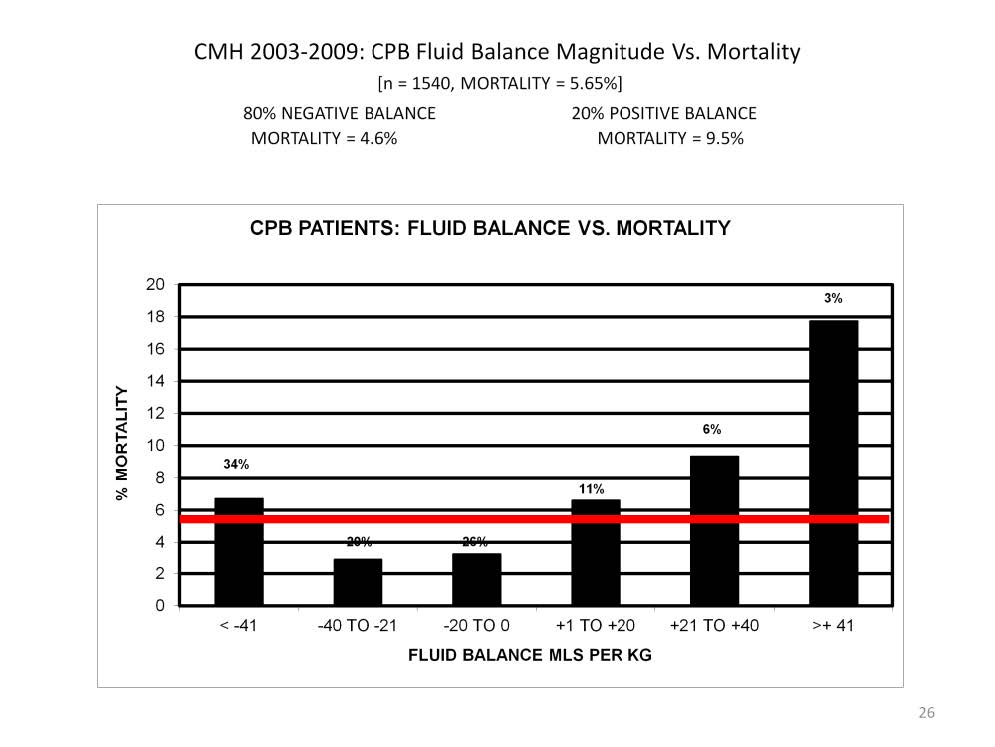
The magnitude of the fluid balance at the end of cardiopulmonary bypass (CPB) correlates to the magnitude of mortality. Patients with zero or negative balances of 0 to -40 mls/kg have the best survival. Patients can tolerate fluid removal up to -40 mls/kg (46% of the population) and still maintain a low mortality rate because excess fluid from congestive heart failure, preoperative fluid rehydration and sometimes preoperative fluid resuscitation can easily be removed without compromising the circulating blood volume. Patients with negative balances greater than -40 mls/kg (34% of the population) may have had too much fluid removed causing overt hypovolemia in the post operative period. This may have necessitated fluid resuscitation causing the mortality rate to rebound to a higher level.
Patients with positive balances have steadily increasing mortality correlating as the amount of the retained fluid increases. Patients with positive balances exceeding +40 mls/kg have a mortality of 17.7%. Fortunately this category only comprises 3% of the population.

Perfusion Theory is an educational platform for the Oxygen Pressure Field Theory (OPFT). August Krogh’s theoretical concept of the oxygen pressure field is explained and then applied to clinical applications in perfusion practice.